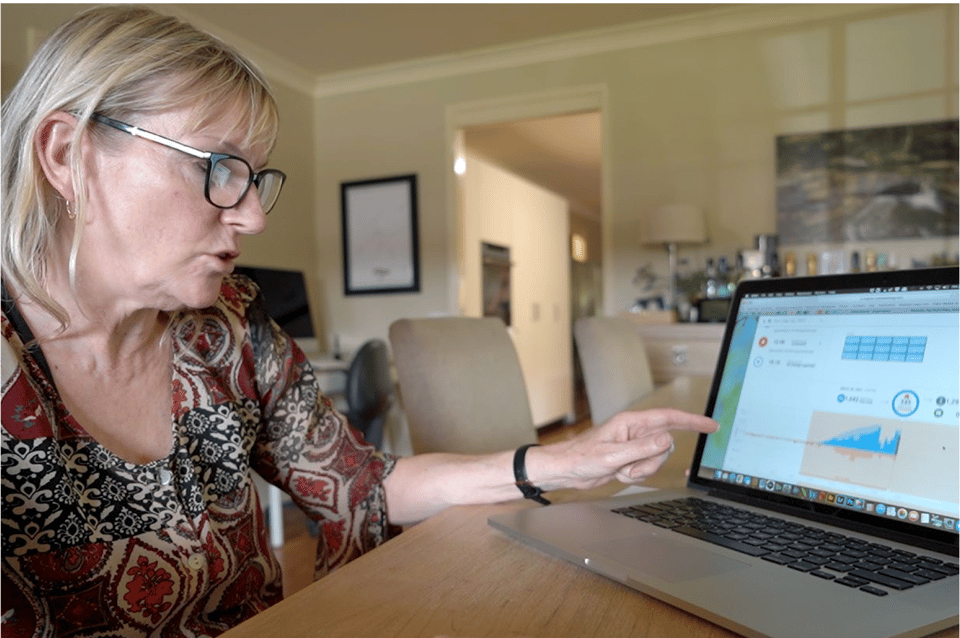Making, Saving, Shifting and Storing Energy
I’m continuing my exploration of the UX of Energy, with a current focus of controlling home solar, and this time looking at a great consumer-oriented project sent to me by the wise Cameron Tonkinwise called Scenarios for Future Living: putting people at the centre of the energy transition. It comes out of the public-private Race for 2030 project and includes extensive enthographic research into the energy habits and attitudes of consumers. And while the work is specific to Australia, the outcomes track with what I’ve seen in the U.S. and Europe.

Incidentally, if you use the Tesla app or a third-party app with your Tesla automobile and/or batteries I would love to hear about your experience. Just reply to this email to get in touch.
They published a report summarizing the research called the Future Home Life report. There were a few findings that I haven’t heard before, such as:
“Another problem is really connected with the noise problem, is that some people who use multi-tariff plan, like daytime tariff and night-time tariff, they attempt to run all their machines [at night]: dryers, vacuum cleaners, dishwashers, and washing machines [etc.]... It’s a challenge for Australian governments to find some good balance between the [energy market issues] and the noise pollution.”
– Artem, 37, inner Sydney
They have issues in Australia that are similar to here in Germany where the sell-back price is low and home owners aren't allowed to share with neighbors:
“[Peer to peer energy trading] gives the control back to the individuals, I guess... if we put new panels on the roof and generate all this power during the day and I knew that next door was home, I’d love to be able to just send a cable across and have them use the excess, that would be fine. But obviously, how you could do that, I don’t really know.”
– Bree, 50, inner Melbourne
The whole report is great and worth reading, but here’s my bullet-point summary:
People who are making their own energy are:
Excited about home energy generation.
Increasingly interested in transitioning to an ‘all-electric’ home.
Don’t understand how much they’re being charged by utilities.
Aren’t satisfied with rates they get for selling energy they generate, and they’re unable to store a lot of it, so they’re shifting towards self-consumption.
The combination of energy technologies, utility prices, and managing home energy demand is enough complexity to overwhelm most homeowners.
Opposed to utility demand management programs until the programs are explained to them, and then they express support.
Energy data continues to have limited impact on use, either because the data is inaccessible or uninteresting, or because they’re already developed frugal energy use habits.
Most households do not consider smart tech necessary or useful for energy management because it doesn’t work well. Smart tech enthusiasts often aren’t interested in using these devices for energy outcomes because they don’t want to align use to costs (e.g. use less power when it’s expensive).
One way I’ll use this research is to evaluate the design of stuff (such as apps) intended to help consumers monitor and control the energy they make. Here’s some criteria I’m working on to help grade that stuff:
Is accessible via a phone or computer; no other smart home devices are required
Displays how much money I’m making and saving (not just how many watts I generated)
Sends alerts when the system is malfunctioning or requires maintenance
Easy[1] way to route power into the batteries or to sell it to the utility
Offers a no-code way to customize charging schedule and sales to utility
Offers an API for sophisticated consumers to code their own extensions
[1] 90% of people with a grade 8 education can learn how to do it the first time within five minutes, and then do it subsequent times within 30 seconds.
Do those criteria sound right? Hit reply and let me know if I’m off the mark.